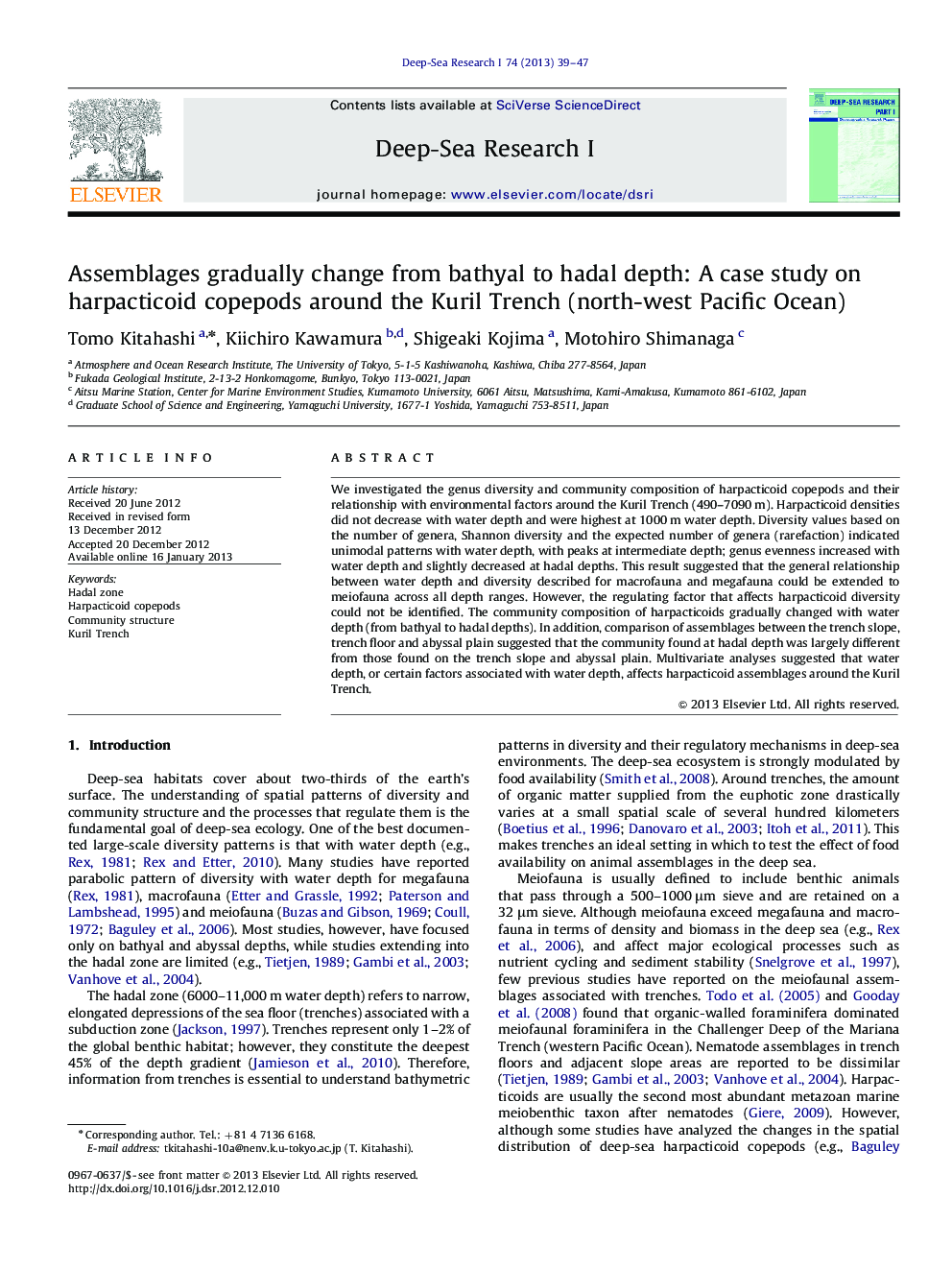| Article ID | Journal | Published Year | Pages | File Type |
|---|---|---|---|---|
| 4534635 | Deep Sea Research Part I: Oceanographic Research Papers | 2013 | 9 Pages |
We investigated the genus diversity and community composition of harpacticoid copepods and their relationship with environmental factors around the Kuril Trench (490–7090 m). Harpacticoid densities did not decrease with water depth and were highest at 1000 m water depth. Diversity values based on the number of genera, Shannon diversity and the expected number of genera (rarefaction) indicated unimodal patterns with water depth, with peaks at intermediate depth; genus evenness increased with water depth and slightly decreased at hadal depths. This result suggested that the general relationship between water depth and diversity described for macrofauna and megafauna could be extended to meiofauna across all depth ranges. However, the regulating factor that affects harpacticoid diversity could not be identified. The community composition of harpacticoids gradually changed with water depth (from bathyal to hadal depths). In addition, comparison of assemblages between the trench slope, trench floor and abyssal plain suggested that the community found at hadal depth was largely different from those found on the trench slope and abyssal plain. Multivariate analyses suggested that water depth, or certain factors associated with water depth, affects harpacticoid assemblages around the Kuril Trench.
► The assemblage of harpacticoid copepods around the Kuril Trench was investigated. ► The diversity values indicated unimodal patterns with water depth. ► The community structure gradually changed from bathyal to hadal depths. ► The hadal assemblage was largely different from those in shallower environments.
